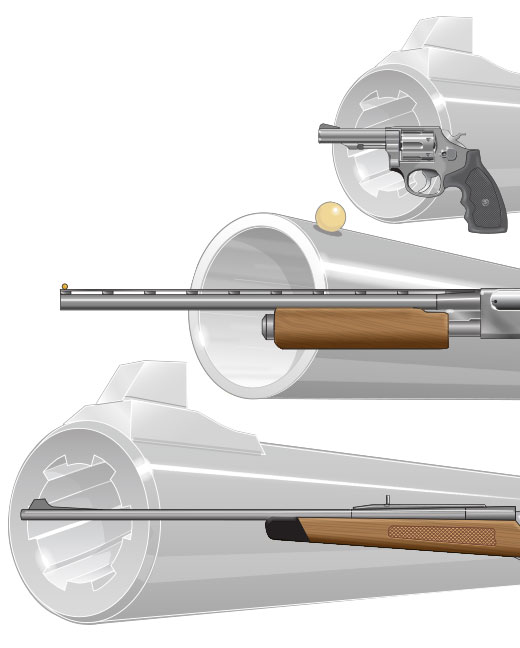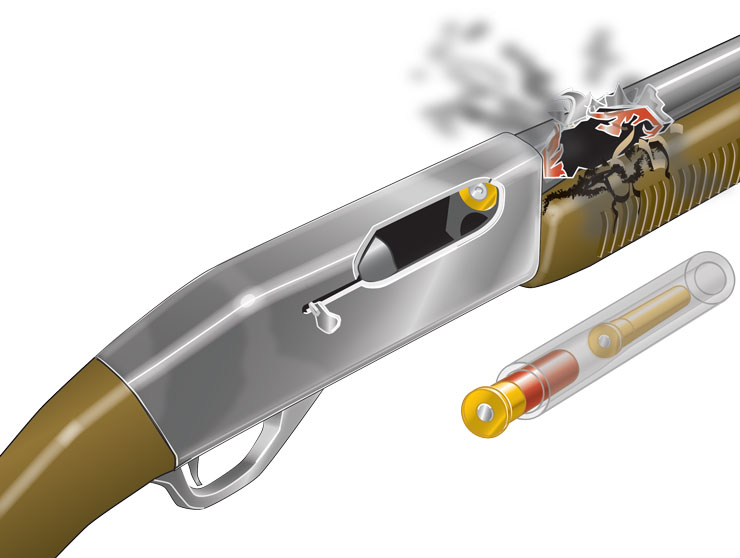What You Learned (cont.)

The main differences between rifles, shotguns, and handguns are their barrels, their intended targets, and the type of ammunition used. The rifle barrel is long and has thick walls with spiraling grooves cut into the bore; the grooved pattern is called rifling. The shotgun barrel is long and made of fairly thin steel that is very smooth on the inside; it’s thinner than a rifle barrel. The handgun barrel is much shorter than a rifle or shotgun barrel because the gun is designed to be shot while being held with one or two hands. The bores of most handgun barrels have a grooved pattern similar to rifles.

Full Choke
When a shotshell is fired from a shotgun, the pellets leave the barrel and begin to spread, called the shot string. To control the shot string, shotgun barrels have a choke. The types of chokes are cylinder, improved cylinder, modified, and full.

Steel shot is slightly lighter than lead shot of the same size, is harder than lead, and is non-toxic.

It is critical that you match the proper ammunition to your firearm correctly. For example, using smaller shotshells in a larger gauge gun may cause serious personal injury or gun damage. Read the specific caliber or gauge designations on the side of the firearm’s barrel, and match that designation exactly.

The maximum projectile range tells you at what distances your firearm’s projectile could cause injury or damage to persons, animals, or objects. It also helps you determine whether or not you can make a clean kill. Knowing your firearm’s maximum projectile range is critical to being a safe and responsible hunter.

Cleaning your firearms regularly keeps them in top condition. To clean a firearm, point the muzzle in a safe direction and make sure the gun is unloaded. Then follow the instructions in the owner’s manual and the cleaning kit.

Firearms must be stored unloaded and in a locked location, separate from ammunition. Store them horizontally or with the muzzle pointed down. The storage area should be cool, clean, and dry.